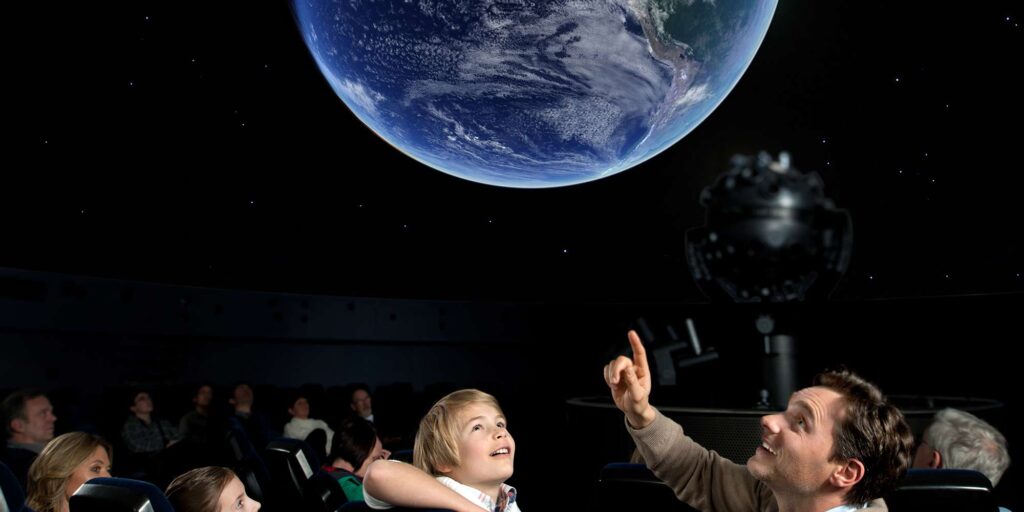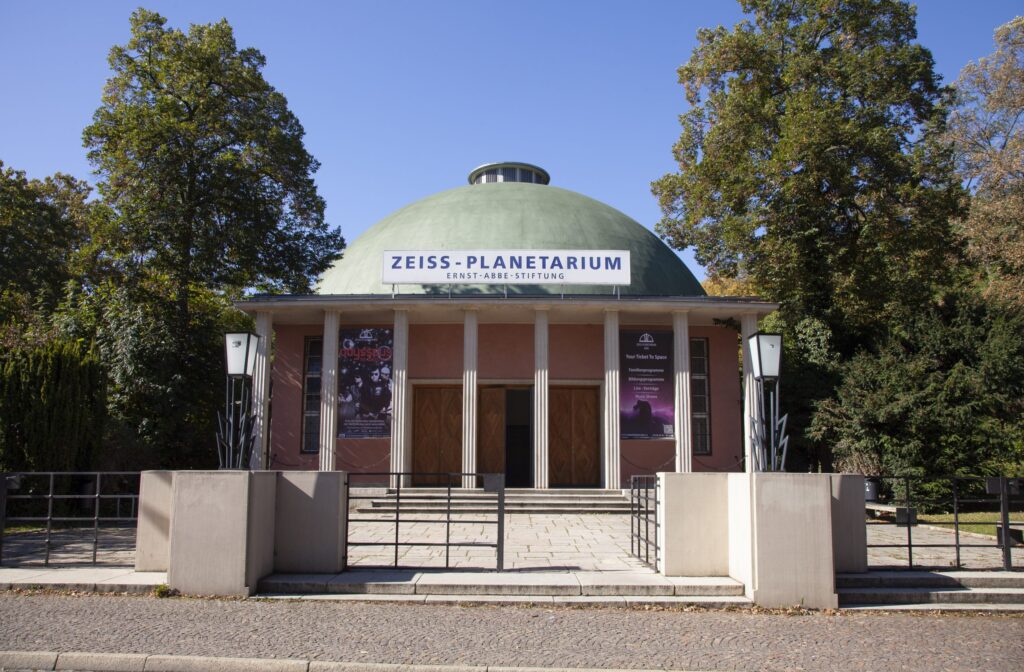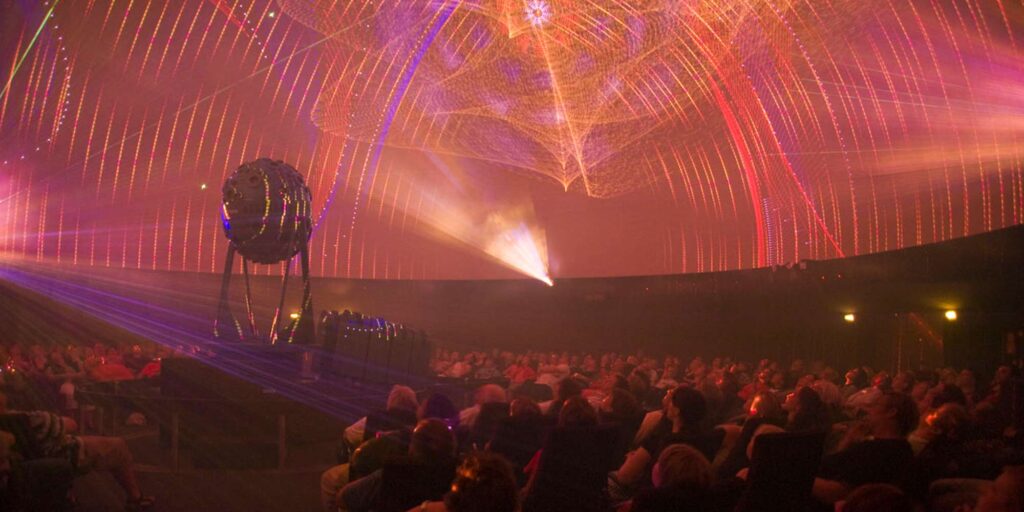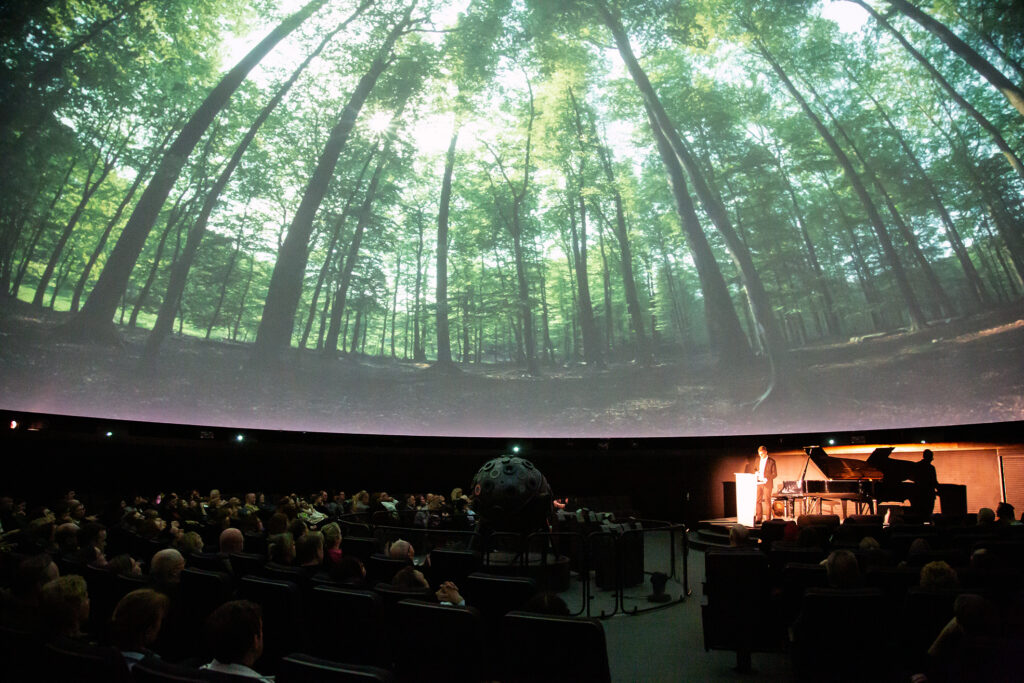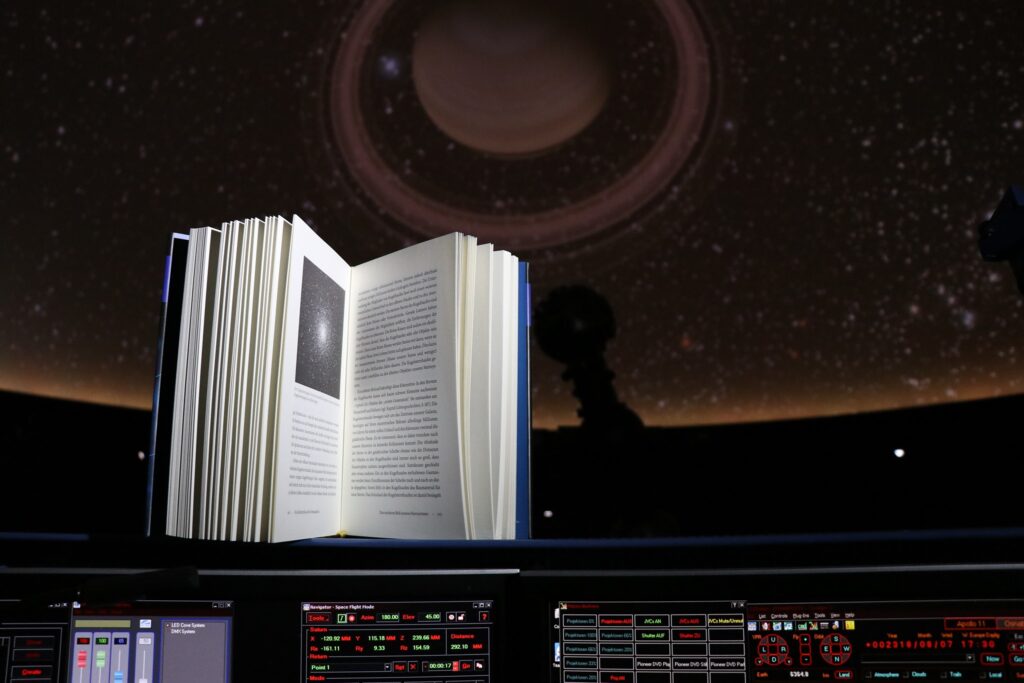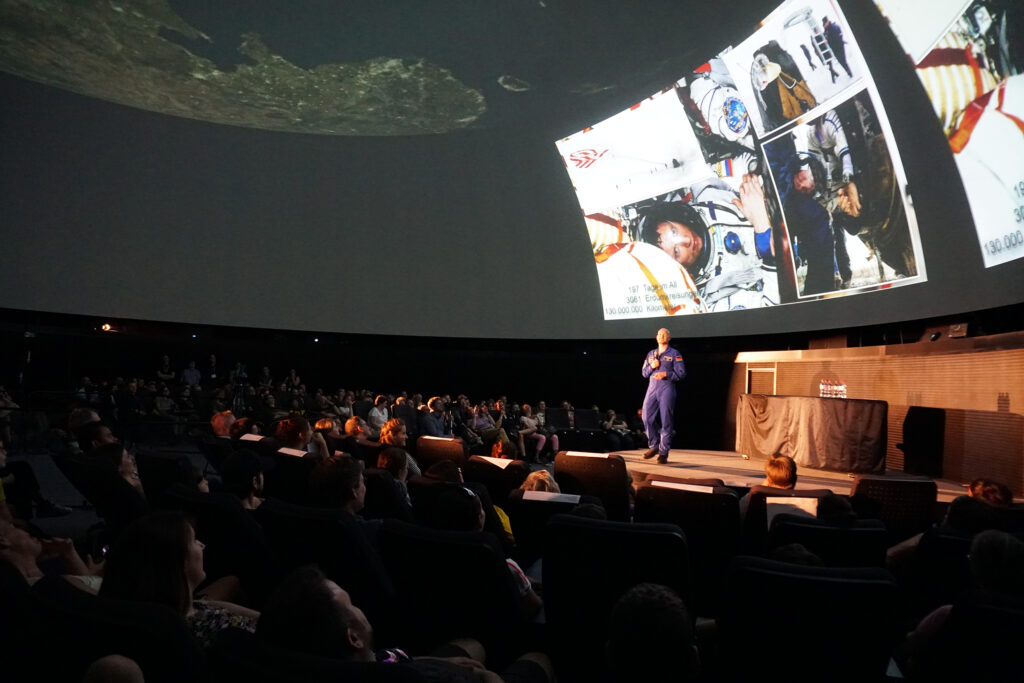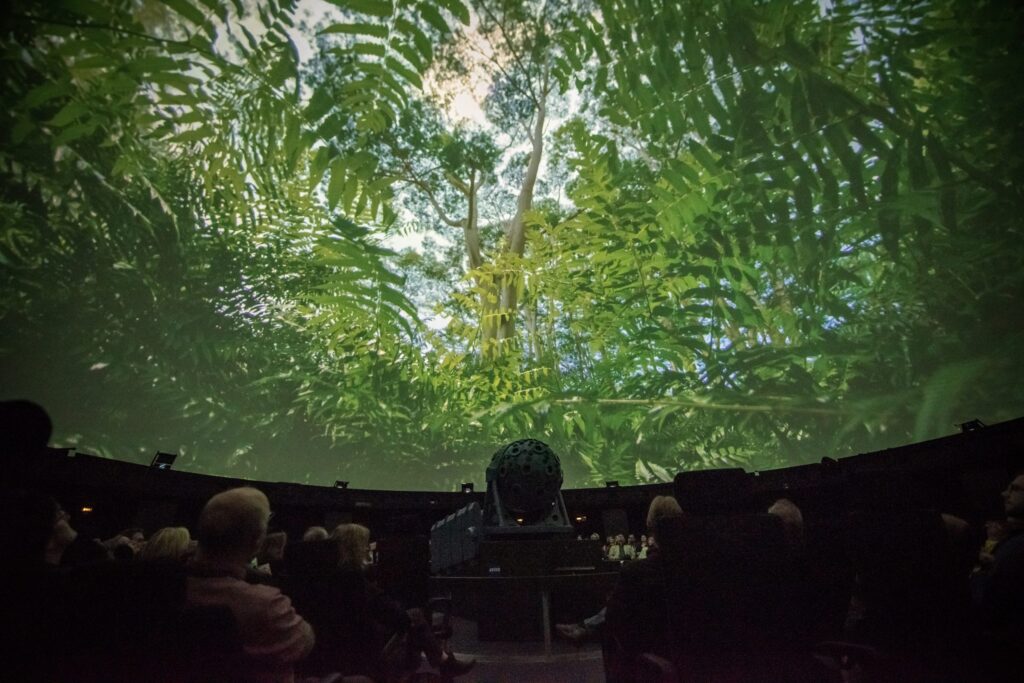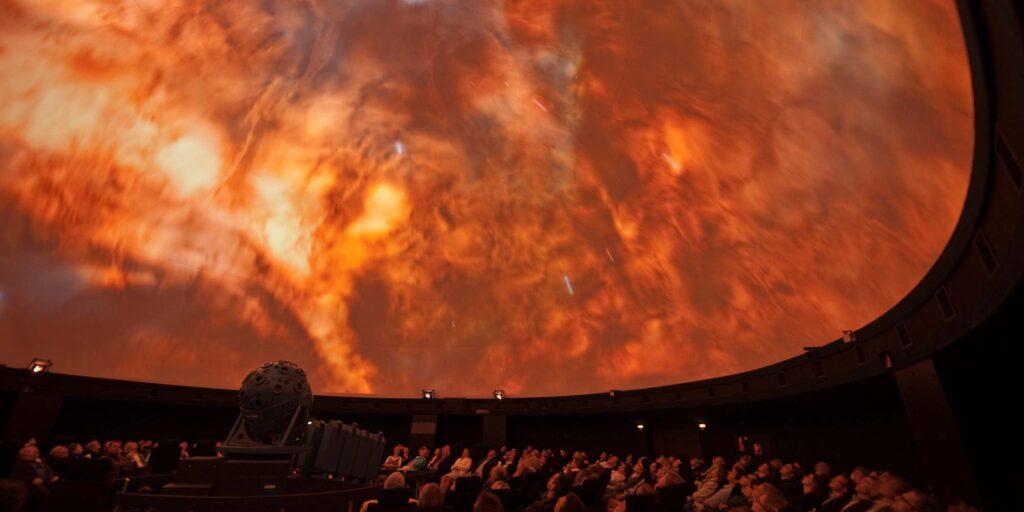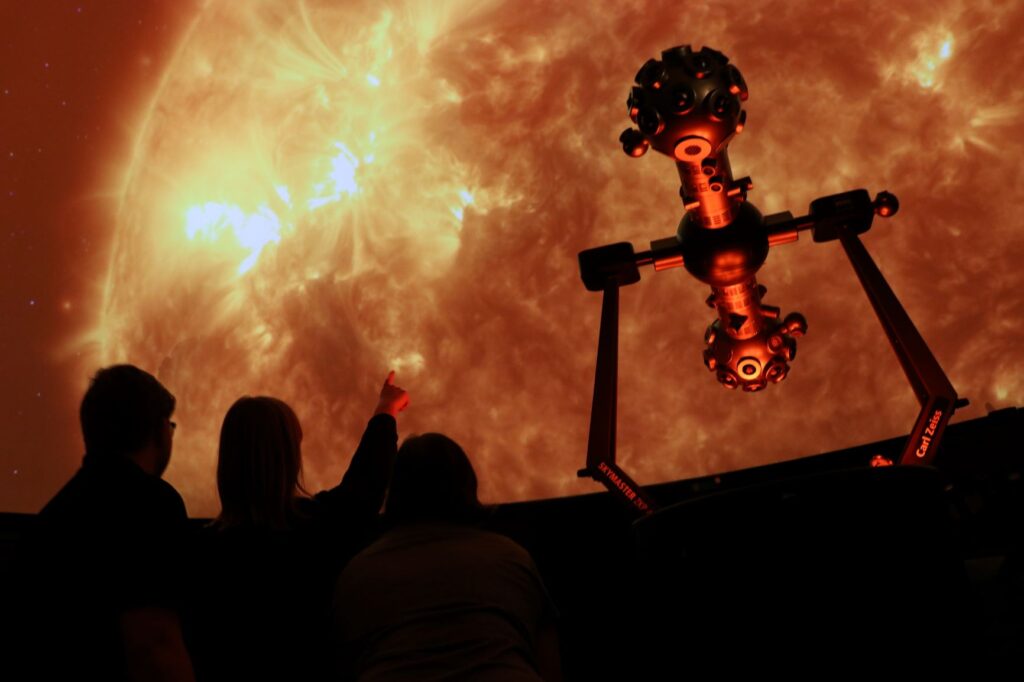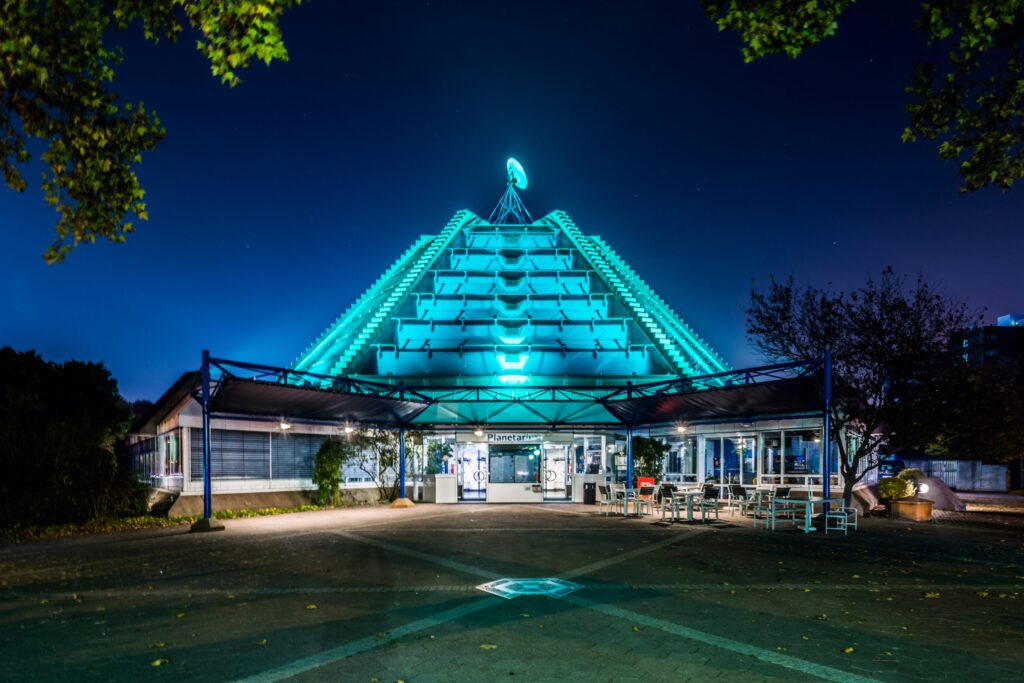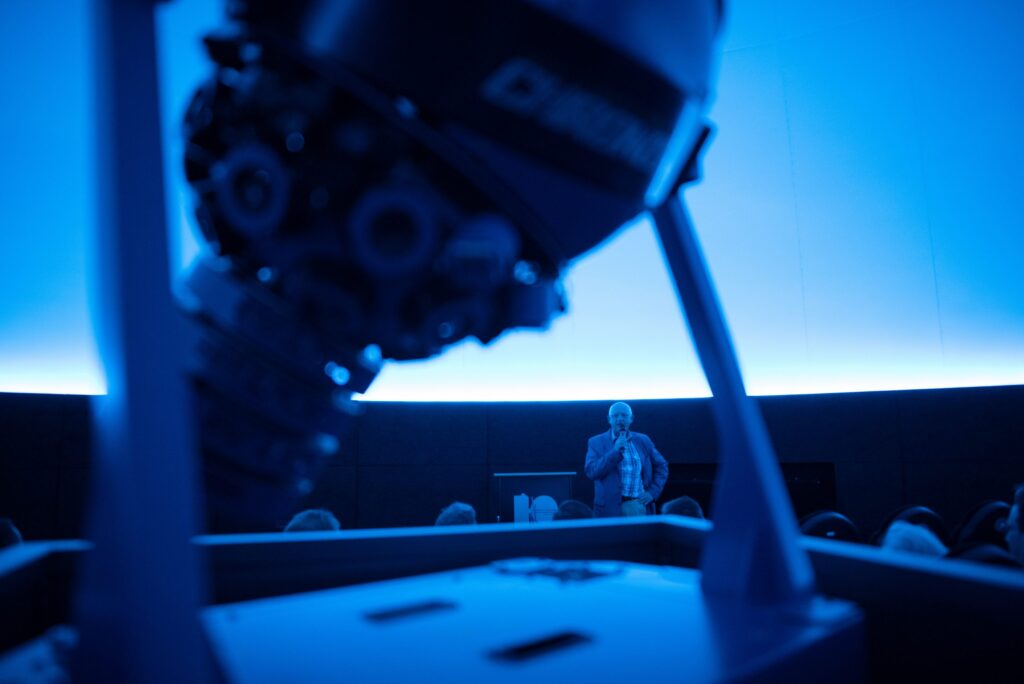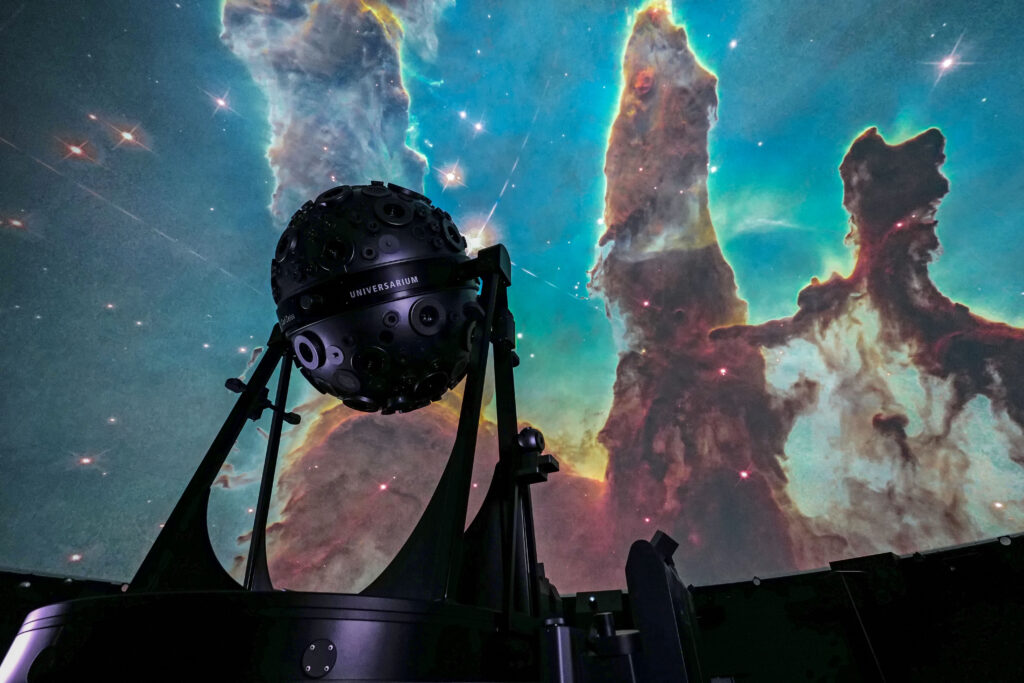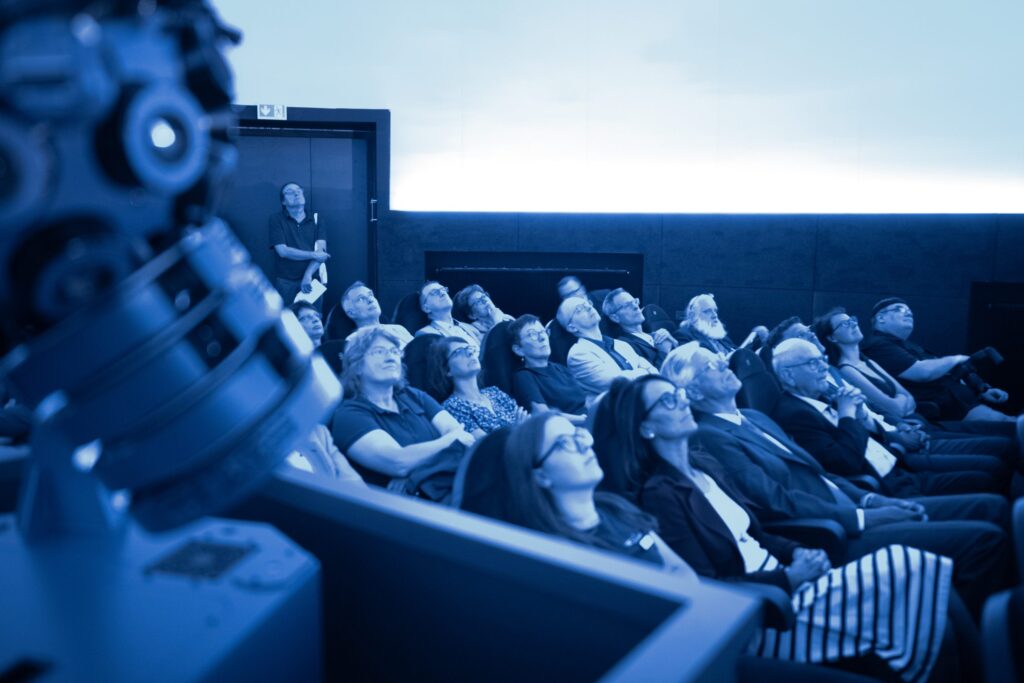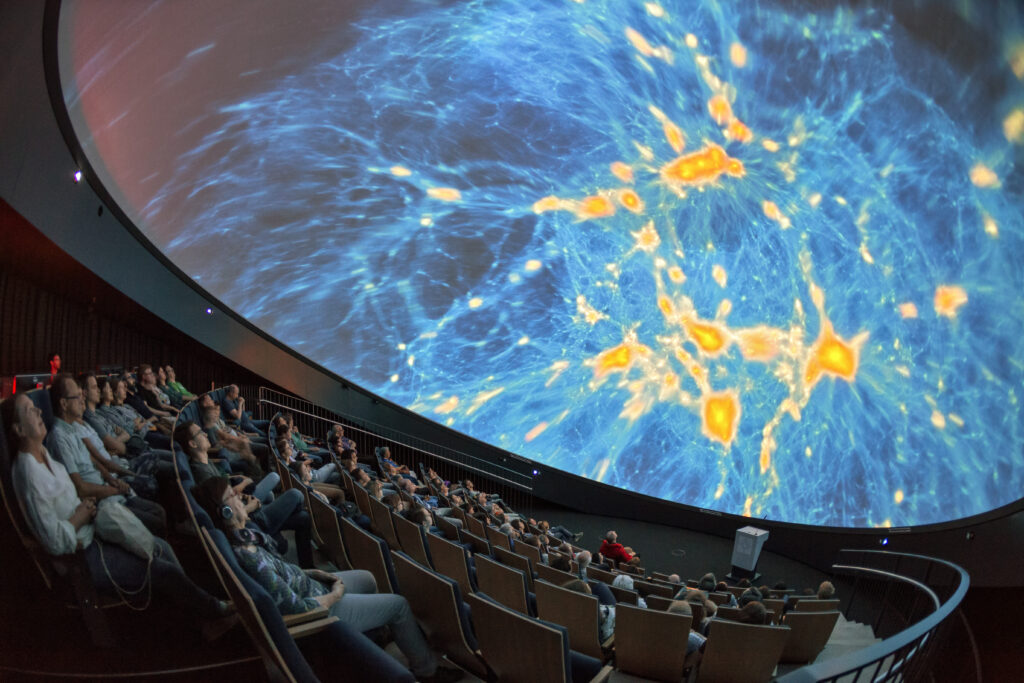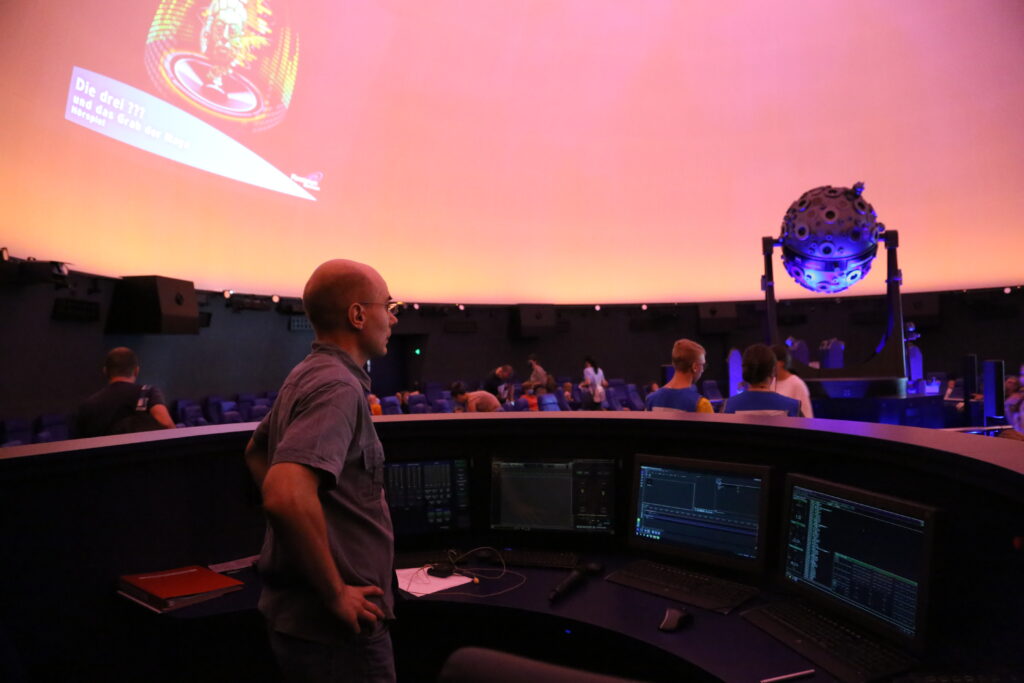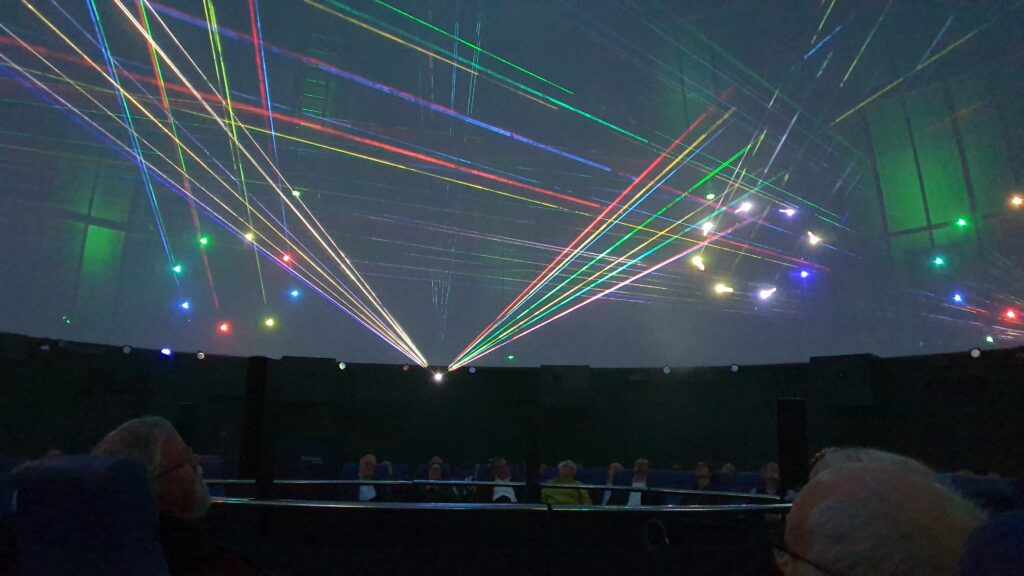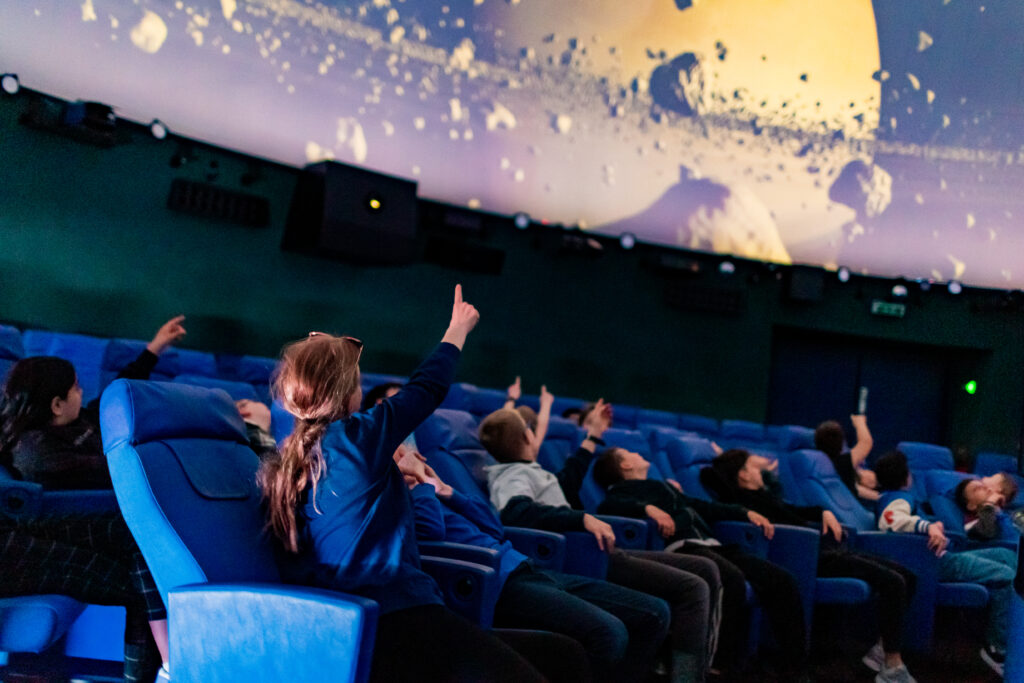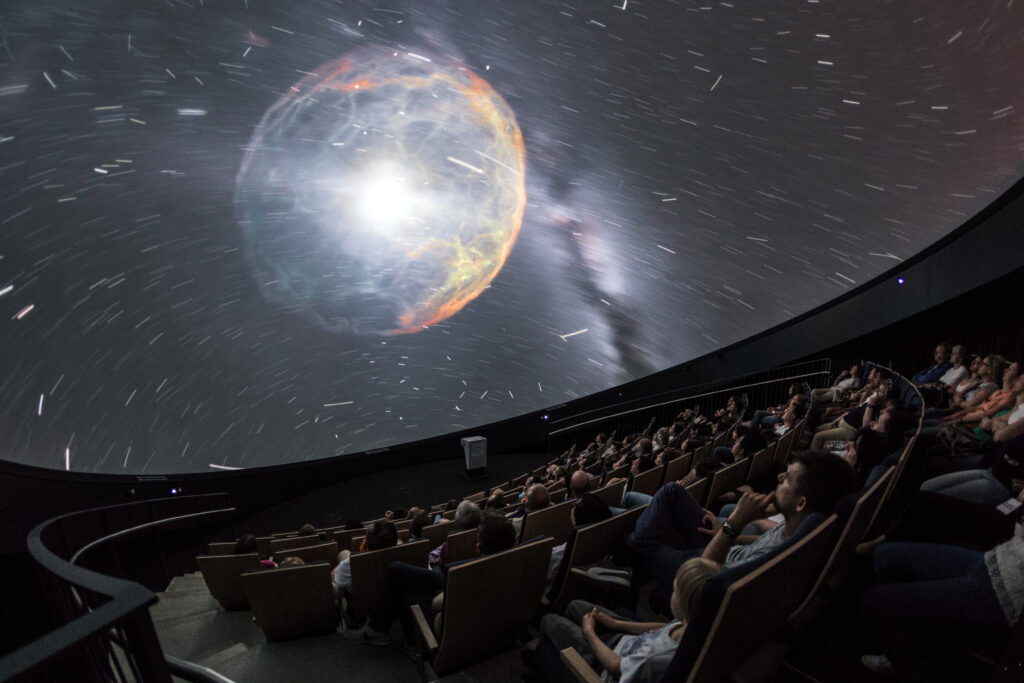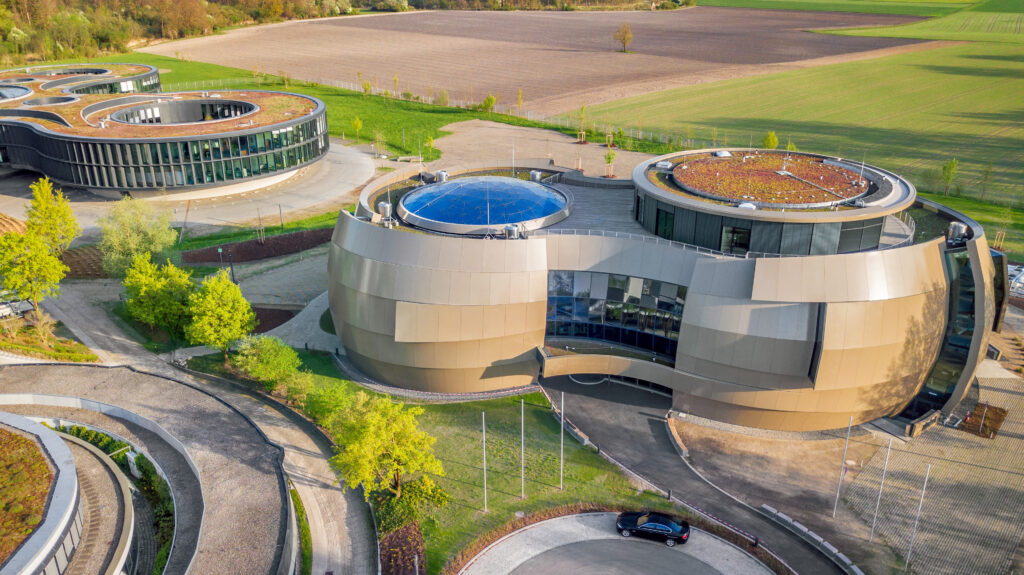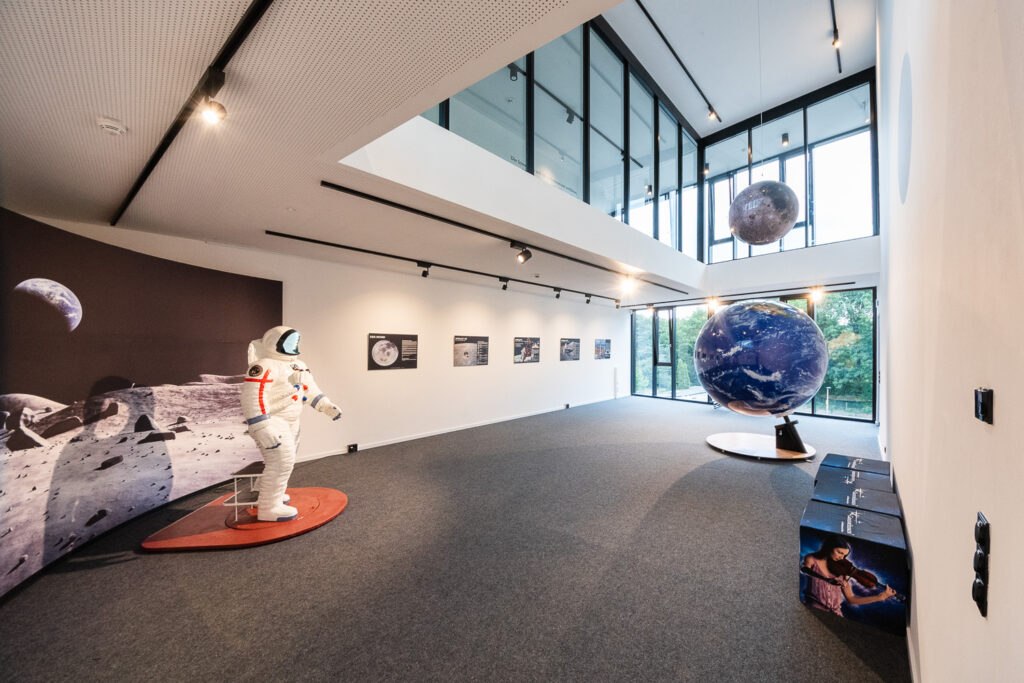You are welcome to use these images, videos and texts for your reporting on our anniversary, provided the source is acknowledged.
© IPS – Logo of the Centennial of the Planetarium ©Zeiss – Planetariums are inspiring. They encourage the younger generation to get involved with the natural world, with science and with our environment. They make it possible to understand and experience the world on a very large scale. © Volkmar Schorcht – The Zeiss Planetarium in Jena has been providing astronomical education and scientific entertainment for nearly a hundred years. In the historic building from 1926, modern technology and a dedicated team ensure a variety of interesting events. © Oblonczyk LWL – Planetariums entertain. They offer much more than just stars. Laser shows with music and unique visual effects can be experienced in many of the planetariums around the world. Premiere d© Steinweg LWL – Planetariums show images from nature. They also show virtual worlds and computer graphics. These are an integral part of modern planetarium presentations. Planetariums are breaking new ground every day. es Planetariumsprogramms “Erde – Geburt eines Planeten” im Zeiss-Großplanetarium am 28.03.2019 © Oblonczyk LWL – Planetariums explain our world. How did the Earth come into being, and how did life begin? Why is the climate changing? Knowledge of our world’s complex interrelationships is the basis for wise decisions about the use of our resources. ©Zeiss – Planetariums ignite people. Many astronauts report that their desire to go into space was born in a planetarium. It is likely that the first people who will fly to Mars will be among the young people who visit a planetarium today. © Lisa Heyn – Planetariums offer a special atmosphere. Their audiovisual capabilities enrich a wide range of events such as readings and concerts. © StiftungPlanetariumBerlin FHeidenreich – Planetariums set the stage for space travel. Astronauts talk about their experiences; scientists report on the challenges and successes of manned space flight. © StiftungPlanetariumBerlin FMArndt – Planetariums are celebrating premieres. 360-degree films for planetariums are gaining in importance and attention. Made to the latest standards, they are finding their way into numerous planetarium programs. © Oblonczyk LWL – Planetariums transport us all into space. They tell about the exploration of near-Earth space, explain the purpose of artificial satellites and how space photos are taken from orbit. © Oblonczyk LWL – Planetariums transport visitors to distant worlds. They learn about the cosmos, about how stars are born and die, and about the processes behind it all. © Lisa Heyn – Planetariums are places for field trip learning. Students are always welcome at the planetarium. Not only do they learn the basics of our cosmic home, but they literally travel to the sites of celestial objects, such as the sun. © Christian Gaier – Planetariums are well known structures in many places. The planetarium in Mannheim, Germany, is an example of a stepped pyramid design. Just as visitors are inspired by space and science, architects are developing diverse and impressive variations for planetarium buildings. © Galileum Solingen – Star projector in standby. © Thomas Henne – A Zeiss Model IX star projector in front of the Helix Nebula projected onto the dome. While star projectors create a realistic night sky, modern digital fulldome systems allow travel through space and time, to distant galaxies and alien worlds, but also to the dawn of time. © Thomas Henne – A Zeiss Model IX star projector in front of the “Pillars of Creation” in the Eagle Nebula projected onto the dome. While star projectors create a realistic night sky, modern digital fulldome systems allow travel through space and time, to distant galaxies and alien worlds, but also to the dawn of time. © Galileum Solingen – The demonstration is about to begin – The audience is anxiously awaiting the first images. A view from inside the planetarium at the ESO Supernova Planetarium & Visitor Centre, which opened its doors to the public on Saturday 28 April 2018. The building is open five days a week and features planetarium screenings, tours and a permanent exhibition in both German and English. The 25-degree tilted planetarium dome does not just give the audience the sensation of watching the Universe, but of being immersed in it. This particular image shows the large scale structure of the Universe Visitors to the ESO Supernova Planetarium & Visitor Centre excitedly await the beginning of a planetarium show. A cutting-edge astronomy centre for the public located at the site of ESO Headquarters in Garching bei München, ESO Supernova is due to open its doors to visitors in April 2018. © Planetarium Mannheim – Light, sound, laser, star projector and digital fulldome systems have to be operated by projectionists in a planetarium. Accordingly, behind a projectionist’s desk it sometimes looks like in the capsule of a spaceship. © Planetarium Mannheim / Christian Gaier – A model IX star projector from the Zeiss company. Seen here at the Mannheim Planetarium (Germany). © Planungsbüro Muckenhaupt – Architectural model of Galileum Solingen. © Galileum Solingen – Not just stars – magnificent cloud images can also fascinate. © Planetarium Mannheim – Many modern planetariums have laser systems, which are mainly used for musical events in the dome. © Planetarium Mannheim / Christian Gaier – People of all ages are enthralled by the immersive displays in a planetarium dome. A view from inside the planetarium at the ESO Supernova Planetarium & Visitor Centre, which opened its doors to the public on Saturday 28 April 2018. The building is open five days a week and features planetarium screenings, tours and a permanent exhibition in both German and English. The 25-degree tilted planetarium dome does not just give the audience the sensation of watching the Universe, but of being immersed in it. © Volkmar Schorcht – Planetariums are diverse. They come in small domes and large domes, in schools and science centers, with digital and analog technology. The programs they offer are just as varied, ranging from special events for children to lectures on scientific topics. The ESO Supernova Planetarium & Visitor Centre is shown in this aerial view. This unique vantage point showcases the architecture of Supernova, which was designed to resemble a close double-star system, with one star transferring mass to its companion. This astrophysical set-up will ultimately lead to the heavier component undergoing a titanic explosion known as a supernova, from which the cutting-edge public astronomy centre takes its name. © Galileum Solingen – Exhibition area at the Galileum in Solingen with rotating exhibitions.
Feel free to use this videos
VIDEO
The Galileum Solingen is a modern planetarium in a disused spherical gas tank with 84 seats and state-of-the-art projection technology. The planetarium dome has a diameter of 12 m.
Copyright: Galileum Solingen
VIDEO
The star projector moves into space in the centre of the projection dome. Ready to start the screening.
Copyright: Planetarium Mannheim
VIDEO
A view of the modern planetarium with its rows of seats and the star projector in the middle of the dome.
Copyright: Planetarium Mannheim
VIDEO
The modern star project in motion.
Copyright: Planetarium Mannheim
VIDEO
Behind the scenes, a look into the technical room.
Copyright: Planetarium Mannheim
Additional material on the pages of our supporters:
For 100 years: Heaven on earth (German)
Special exhibition in the German Museum on the anniversary of the first projection planetarium
ZEISS celebrates “100 years of planetariums” anniversary (German)
Press-kit:Enabling travel through space and time

